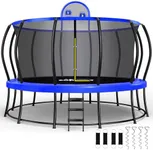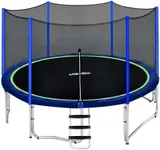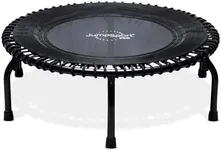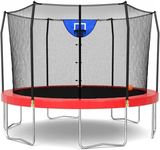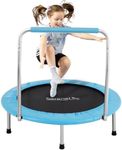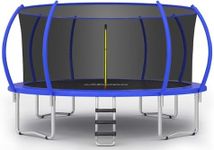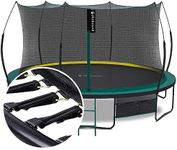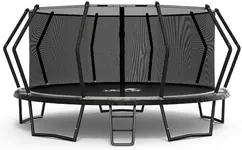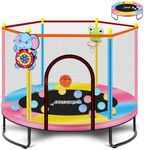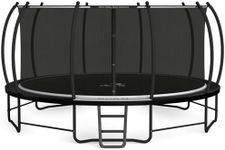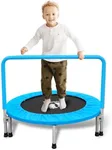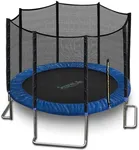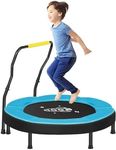Buying Guide for the Best Trampoline Brands
Choosing the right trampoline can be a fun and rewarding experience, but it's important to consider several key factors to ensure you get the best fit for your needs. Trampolines come in various sizes, shapes, and with different features, so understanding what to look for can help you make an informed decision. Here are some key specifications to consider when selecting a trampoline.SizeThe size of the trampoline is crucial as it determines how much space you will need and how many people can use it at once. Trampolines range from small, 6-foot models suitable for young children or limited spaces, to large, 15-foot models that can accommodate multiple users and provide more jumping area. If you have a small backyard or only one child, a smaller trampoline might be sufficient. For larger families or those who entertain often, a bigger trampoline would be more appropriate.
ShapeTrampolines come in various shapes, including round, rectangular, and oval. Round trampolines are the most common and are generally safer as they direct the jumper towards the center. Rectangular trampolines offer a larger jumping area and are preferred by gymnasts and athletes for their even bounce. Oval trampolines combine the benefits of both round and rectangular shapes, providing a larger jumping area while still being relatively safe. Consider who will be using the trampoline and for what purpose when choosing the shape.
Weight LimitThe weight limit of a trampoline indicates the maximum weight it can safely support. This is important for safety reasons and to ensure the longevity of the trampoline. Trampolines with higher weight limits are generally more durable and can accommodate multiple users at once. If the trampoline will be used by adults or multiple children, look for a model with a higher weight limit. For single, young users, a lower weight limit may be sufficient.
Safety FeaturesSafety features are essential to prevent injuries while using the trampoline. Look for trampolines with safety nets, padded frames, and secure enclosures. Safety nets prevent users from falling off the trampoline, while padded frames protect against impact injuries. Some trampolines also come with no-gap enclosures that prevent users from getting caught between the springs. Prioritize trampolines with comprehensive safety features, especially if young children will be using it.
Spring vs. SpringlessTraditional trampolines use springs to provide bounce, while springless trampolines use flexible rods or other mechanisms. Springless trampolines are generally considered safer as they eliminate the risk of injury from exposed springs. They also tend to offer a smoother bounce and are more durable. However, they can be more expensive. If safety and durability are top priorities, consider a springless trampoline. If budget and traditional bounce feel are more important, a spring-based trampoline might be the better choice.
Durability and MaterialsThe durability of a trampoline is determined by the quality of its materials and construction. Look for trampolines made with high-quality, weather-resistant materials such as galvanized steel frames and UV-resistant jumping mats. Durable trampolines will last longer and provide a safer jumping experience. If the trampoline will be left outside year-round, ensure it is made from materials that can withstand various weather conditions. For indoor or occasional use, durability may be less of a concern.
Assembly and MaintenanceConsider how easy the trampoline is to assemble and maintain. Some trampolines come with detailed instructions and all necessary tools, making assembly straightforward. Others may require professional installation. Maintenance involves checking the trampoline regularly for wear and tear, ensuring the safety net is intact, and replacing any damaged parts. If you prefer a hassle-free experience, look for trampolines that are easy to assemble and require minimal maintenance.
